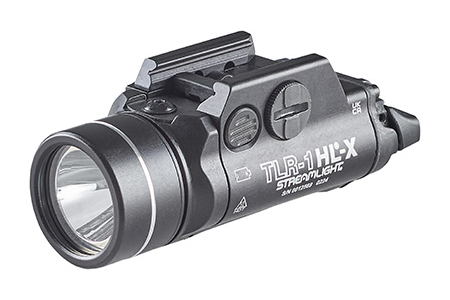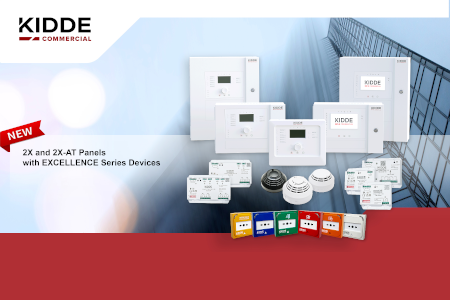 `Dedicated to providing fire protection solutions
`Dedicated to providing fire protection solutions
Janus Fire Systems® is a full-service fire protection manufacturer and designer dedicated to providing unsurpassed fire protection solutions for any hazard type by integrating proven fire protection technology.
Janus Fire Systems® combines experience and innovation with high quality manufacturing and dedicated customer service.
Formed by four fire protection professionals with over 120 years of collective industry experience, Janus Fire Systems® designs and tests all of its products and systems at the Janus Fire Systems® Corporate Headquarters and Research Facility in Crown Point, Indiana, USA. The primary production facility is located just outside of Birmingham, Alabama, USA.
All manufacturing processes are supervised by internal Quality
Control programs in compliance with ISO 9001:2000 and ISO 14001:2004 as certified by Det Norske Veritas (DNV).
Janus Fire Systems® products claim the benefit of 38 years of manufacturing expertise and the backing of parent company Amerex Corporation (an affiliate of McWane, Inc.)
Product Lines
Janus Fire Systems® products and services are marketed in their respective territories by a select team of Fire Protection Integrators capable of serving the needs of the most demanding clients.
Janus Fire Systems’ team of professionals partners with authorised integrators to bring quality Janus Fire Systems® products to the global marketplace.
Clean Agent
Janus Fires Systems® Clean Agent Fire Extinguishing Systems
utilising 3M® Novec® 1230 Fire Protection Fluid offer a long-term,
sustainable clean agent fire protection technology.
‘janus fire systems clean agent systems utilising novec 1230 fluid allow for more efficient use of space compared to inert gas systems.’
Novec 1230 fluid has the greatest margin of safety, the lowest GWP for chemical clean agent alternatives, and zero ozone depletion potential.
Novec 1230 fluid is a fluoroketone. Extinguishing via its cooling
effect, Novec 1230 fluid works as a gas, yet it is a liquid at room
temperature.
Because it is not stored under pressure, Novec 1230 fluid has unique shipping and handling advantages over high pressure alternatives. Janus Fires Systems® Clean Agent Systems utilising Novec 1230 fluid allow for more efficient use of space compared to inert gas systems.
Janus Fires Systems® Clean Agent Systems are engineered fire extinguishing systems designed for total flooding applications.
Utilising Novec 1230 fluid, they are ideal for special hazards:
Spaces where the continuous operation of high-value equipment
is paramount.
These include telecommunication switch rooms, computer rooms, and electronic control rooms.
Janus Fires Systems® Clean Agent Systems are also perfectly suited for environments such as libraries, cultural facilities, storage rooms,
archives, and museums, where valuable items must not be damaged by the fire extinguishing agent.
Novec 1230 fluid has zero ozone depletion potential and the lowest
atmospheric lifetime for chemical clean agent alternatives: 5 days.
The next closest Halon alternative is 29 years.
Novec 1230 fluid has a Global Warming Potential of 1 which is 99.9%
lower than any halocarbon agent acceptable for use in occupied spaces.
Novec 1230 fluid also has the largest margin of safety for use in occupied spaces.
The storage and release of Novec 1230 fluid is controlled by
three uniquely designed cylinder valves and steel cylinders in eight
different sizes.
Each system is categorised by valve size. The Sv system for Novec 1230 fluid utilises a 32 mm valve supporting cylinder capacities of 10 to 59.4 kg.
The Mv system utilises a 50 mm valve supporting cylinder capacities of 57.3 to 191.4 kg of Novec 1230 fluid, and the Lv system utilises an 80 mm valve to allow cylinder capacities of 137.9 to 453.6 kg.
Multi-cylinder arrangements add even greater flexibility as up to 15 cylinders may be discharged from a single Janus Fire Systems®
primary cylinder.
Janus Fire Systems® has also developed the Janus Design Suite™ Flow Calculation Software for use with Janus Fire Systems® Clean Agent Systems.
This user-friendly program is built on the robust Microsoft .net framework and is compatible with Windows 98, XP, Vista, and 7, 32 and 64 bit versions.
The JDS flow calculation module allows users to design and calculate
agent flow for systems utilising Novec 1230 fluid, including hazard
pressurisation estimation.
In addition to agent flow calculation capabilities, the JDS software package includes an industry first “proposal maker” tool that offers Janus Fire Systems® product integrators an expedient method for developing accurate proposals.
The JDS proposal maker may be used independently of the JDS flow calculation module or can import system information directly from the flow calculation module.
The Janus Design Suite has been tested and approved by both UL and FM.
All these factors make Janus Fire Systems® Clean Agent Systems utilising Novec 1230 fluid an effective, versatile, and environmentally conscious option anywhere lengthy downtime for agent cleanup or damage from the suppression agent is unacceptable.
Cardbon Dioxide
Carbon Dioxide Fire Extinguishing Systems have been utilised since the early part of the 20th century because they work efficiently, leave no residue, and employ a readily available and inexpensive suppression agent.
Carbon Dioxide is the only clean agent capable of being used in total flooding and local application system designs.
Janus Fire Systems® Low-Pressure Carbon Dioxide Systems store the carbon dioxide in large insulated vessels fitted with commercial refrigeration units.
Capacities range from 1.25 ton (1134 kg) to 50 ton (45359 kg). Janus Fire Systems® High-Pressure Carbon Dioxide Systems store the carbon dioxide in steel spun cylinders of usually 50 or 100 lb (22.7 or 45.4 kg) capacities, allowing installation of carbon dioxide systems in most facilities.
The carbon dioxide method of fire suppression by oxygen depletion requires specific safeguards to prevent exposure of personnel to unsafe concentrations of agent as defined by NFPA 12 – Standard on Carbon Dioxide Extinguishing Systems.
The 2005 Edition of NFPA 12 requires even existing installations to upgrade safeguards to include pneumatic time delays, pre-discharge sirens, specific signage, lockout valves, and odorisers.
Janus Fire Systems® Carbon Dioxide Pilot Cabinets together with a wide selection of discharge and lockout valves make compliance simple for both new installations and site upgrades.
Janus Fire Systems® Carbon Dioxide Systems are ideal for industrial settings such as in key risk areas associated with heavy manufacturing, metals production, and power generation and distribution.
Carbon dioxide is perfectly suited for locations such as coal storage silos and bunkers where the combustible nature of the hazard requires continuous inerting application in addition to basic suppression.
Local application carbon dioxide systems are essential in protecting areas such as in the production of coated metals, papers, and films used in packaging where water and other agents would damage assets and total flooding application is impossible.
Control Systems
To supplement each Janus Fire Systems® Fire Extinguishing System, Janus Fire Systems® offers a full line of alarm, detection, and control products.
Janus Fire Systems® carries conventional and addressable control panels and accessories.
The Janus Fire Systems® JFS-C1 conventional releasing panel provides a series of preset programs for a variety of common system arrangements as well as custom program capabilities.
Janus Fire Systems® addressable panels support a variety of modules and auxiliary components allowing for diverse systems to fit the requirements of each extinguishing system.
Associated point-type or linear detection devices, manual releasing, abort, lockout, or transfer stations, and varying horn, strobe, and horn-strobe combinations are available for both.
Air Sampling
For unique early warning detection, Janus Fire Systems® offers the VESDA® Air Sampling Detection System.
Air sampling detection differs from point type detection in that it uses piping lined with special orifices to draw air from the protected space to a detector that utilises a high-precision laser to analyse incoming air.
The detector can detect background dirt and debris levels in order
to adjust for and differentiate between dust and smoke particles.
The orifices in the air sampling piping network are located in accordance with NFPA 72 and each orifice is listed as an individual detection device.
The use of sample tubing allows for detection in very small spaces such as those found in switchgear, circuit breakers, and capacitor enclosures.
It also makes the VESDA® detector immune to EMF and RFI emissions generated by high voltages and frequencies.
VESDA® detectors are well suited for highly secure facilities such as clean rooms, underfloors, and ceiling spaces where high air flow precludes the use of point-type detectors.
Architectural treasures, libraries, prisons, and rare document archives are also very good candidates for very early smoke detection systems.
Engineering
Janus Fire Systems® employs an experienced staff of engineers
and designers for all areas of special hazard protection who work together with authorised Janus Fire Systems® integrators to provide ideal solutions for each individual system and each unique hazard area.
Quality products combined with experience, innovation, and the Janus Fire Systems® commitment to service and excellence make Crown Point, Indiana, USA, the epicenter for special hazard fire extinguishing systems.
Contact Janus Fire Systems® at 1-219-663-1600 or visit our
website: www.janusfiresystems.com











